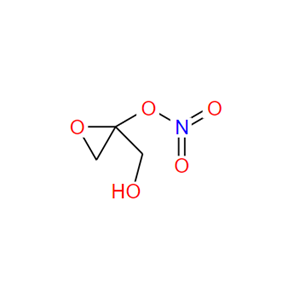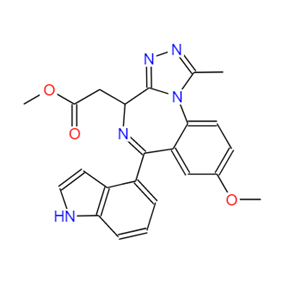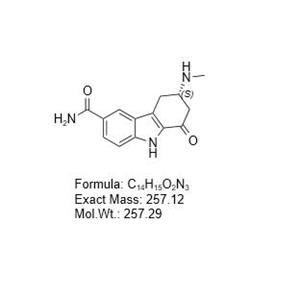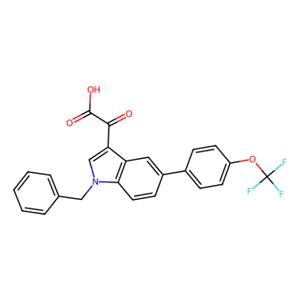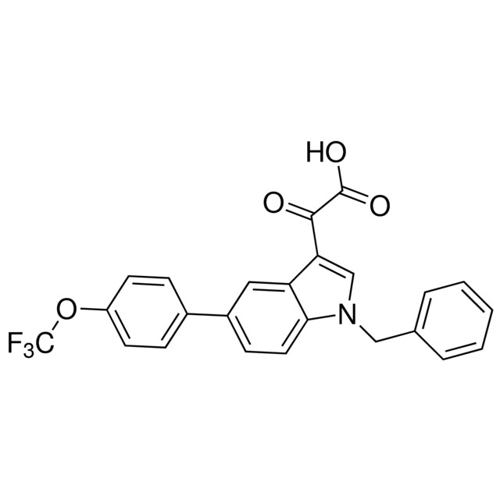| 名称 | Tiplaxtinin |
| 描述 | Tiplaxtinin (Tiplasinin)(PAI-039) is a selective and orally efficacious inhibitor of plasminogen activator inhibitor-1 (PAI-1) with IC50 of 2.7 uM. |
| 细胞实验 | Briefly, cell lines, T24, UM-UC-14, UROtsa, and HeLa cells are plated in 96-well dishes in triplicate at 1×103 cells per well and allowed to adhere for 24 hours. Subsequently, tiplaxtinin is added to the wells and allowed to incubate at the indicated concentrations. Cellular proliferation is determined by CellTiter-Glo Luminescent Cell Viability Assay according to manufacturer's instructions at 24 hours, and IC50 of tiplaxtinin is determined in Graphpad Prism. Luminescence was measured using a FLUOstar OPTIMA Reader.(Only for Reference) |
| 激酶实验 | Direct PAI-I in vitro activity assays : The chromogenic assay is initiated by the addition of tiplaxtinin (10 – 100 μM final concentration, maximum DMSO concentration of 0.2%) to recombinant human PAI-1 (140 nM in pH 6.6 buffer). After a 15 minute incubation at 25°C, 70 nM of recombinant human t-PA is added, and the combination of tiplaxtinin, PAI-1 and tPA are incubated for an additional 30 minutes. After the second incubation, Spectrozyme tPA, is added and absorbance read at 405 nm at 0 and 60 minutes. Relative PAI-1 inhibitory activity is equal to the residual tPA activity in the tiplaxtinin / PAI-1 treatment. Control treatments include the complete inhibition of tPA by PAI-1 at the molar ratio employed (2:1), and the absence of any effect of the tiplaxtinin on t-PA alone. The immunofunctional assay is based upon the non-SDS dissociable interaction between tPA and active PAI-1. Assay plates are coated with 100 μl of a solution of t-PA (10 μg/ml in TBS), and kept at 4 °C overnight. Tiplaxtinin is dissolved in DMSO and diluted to a final concentration of 1-100 μM as described above. Tiplaxtinin is then incubated with human PAI-1 (50 ng/ml) for 15 minutes, and an aliquot of this solution added to the t-PA-coated plate for 1 h. The solution is aspirated from the plate, which is then washed with a buffer consisting of 0.05% Tween 20 and 0.1% BSA in TBS. This assay detects only active inhibitory PAI-1 (not latent or substrate) bound to the plate, and is quantitated using a monoclonal antibody against human PAI-1 (MA33B8). A 1000X dilution of MA33B8 is added to the plate and incubated at for one hour, aspirated and washed. A secondary antibody consisting of goat anti-mouse IgG (H+L)-AP alkaline phosphatase conjugate is added, incubated for one hour, aspirated and washed. A 100 μl aliquot of alkaline phosphatase solution is added, followed by determination of absorbance at 405 nm 60 minutes later.The quantitation of residual active PAI-1 bound to t-PA at varying concentrations of tiplaxtinin is used to determine the IC50 by fitting the results to a logistic dose-response program, with the IC50 defined as the concentration of compound required to achieve 50% inhibition of PAI-1 activity. The assay sensitivity is 5 ng/ml of human PAI-1 as determined from a standard curve ranging from 0-100 ng/ml of human PAI-1. |
| 体外活性 | 在一系列人类膀胱细胞系中,PAI-1导致细胞增殖、细胞黏附和群体形成的减少,并引发凋亡和脱落性凋亡。[4] |
| 体内活性 | 在大鼠颈动脉血栓模型中,Tiplaxtinin(1 mg/kg,口服)延长了血栓闭塞时间,并阻止了颈动脉血流量减少。[1] 在C57BL/6J小鼠中,Tiplaxtinin(1 mg/g饲料)减轻了Ang II引起的主动脉重塑。[2] 在未经治疗的1型糖尿病小鼠中,Tiplaxtinin(口服)恢复了骨骼肌再生。[3] 在携带人类癌细胞系T24和HeLa异种移植物的无胸腺小鼠中,Tiplaxtinin(1 mg/kg,口服)减缓了肿瘤异种移植物的生长,这与肿瘤血管生成减少、细胞增殖减少及凋亡增加有关。[4] |
| 存储条件 | Powder: -20°C for 3 years | In solvent: -80°C for 1 year | Shipping with blue ice. |
| 溶解度 | H2O : < 1 mg/mL (insoluble or slightly soluble)
Ethanol : 15 mg/mL (34.1 mM)
DMSO : 50 mg/mL (113.8 mM)
|
| 关键字 | Inhibitor | PAI 039 | Plasminogen activator inhibitor-1 | inhibit | PAI-1 | PAI039 | Apoptosis | Tiplaxtinin |
| 相关产品 | L-Glutamic acid | Metronidazole | 5-Fluorouracil | Dextran sulfate sodium salt (MW 4500-5500) | Stavudine | Tributyrin | Myricetin | Sorafenib | L-Ascorbic acid | Acetylcysteine | Salicylic acid | Sodium 4-phenylbutyrate |
| 相关库 | 抑制剂库 | 经典已知活性库 | 已知活性化合物库 | 代谢化合物库 | 含氟化合物库 | 细胞凋亡化合物库 | NO PAINS 化合物库 | 临床期小分子药物库 | 口服活性化合物库 | 药物功能重定位化合物库 |
